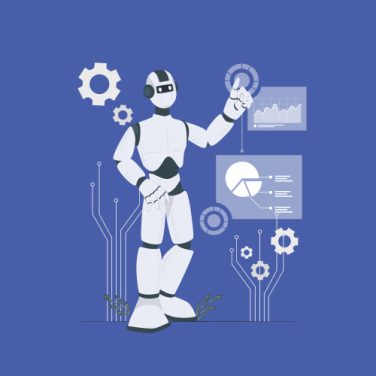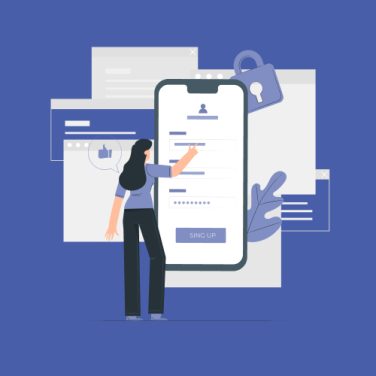Paper timesheets and punch cards are prone to errors, lost records, and fraudulent entries. They lack audit trails and distract HR teams with manual reconciliations. Manual methods cannot scale for remote or hybrid teams.
Migrating to a biometric attendance machine streamlines operations and improves accountability.
How do biometric attendance systems work?
| Stage | Description |
|---|---|
| Enrolment | Captures biometric samples (fingerprint, face, iris, voice) and converts them into encrypted templates for secure storage. |
| Authentication | Performs a live scan of the trait, extracts unique features and matches them against stored templates using pattern-matching algorithms. |
| Data Storage | Stores attendance logs on-device (for offline mode) or syncs to a centralised database or cloud platform in real time. |
| Security Measures | Implements encryption, liveness detection and anti-spoofing techniques to protect templates and prevent unauthorised access. |
| Privacy & Compliance | Enforces GDPR, CCPA and local regulations with data retention policies, consent management and audit trails. |
Types of biometric technologies
Organisations can choose from several biometric modalities to balance cost, accuracy and user experience. Each technology has unique advantages and limitations:
- Fingerprint recognition: The most common and cost-effective method. It offers moderate false acceptance and rejection rates and works well in controlled environments.
- Facial recognition: A contactless, fast solution ideal for hygiene-sensitive applications. Performance can be influenced by lighting conditions and face coverings.
- Iris recognition: Offers the highest accuracy and resilience against spoofing. Requires specialised hardware and is best suited for high-security facilities.
- Voice recognition: Enables remote check-in via phone or mobile app. It is susceptible to background noise and requires robust liveness detection.
- Emerging modalities: Vein pattern, palm print and gait analysis are gaining traction for niche use cases and enhanced multi-modal security.
Benefits and challenges of using biometric attendance systems
Implementing a biometric attendance system delivers significant ROI but also presents challenges that organisations must address.
- Benefits: Unparalleled accuracy in time tracking, comprehensive audit trails and reduced payroll leakage. Organisations typically see a 3–5% reduction in labour costs within the first year.
- Enhanced security: Unique identifiers prevent buddy punching and unauthorised access.
- Streamlined workflows: Automated logs eliminate manual entry, speeding up payroll and compliance reporting.
- Challenges: Upfront investment in hardware and software licensing can be substantial.
- User privacy concerns: Employees may resist biometric capture without clear policies and consent.
- Hardware maintenance: Devices require periodic calibration and firmware updates to ensure accuracy.
Balancing security and convenience requires transparent privacy policies, regular device calibration and employee training. Clear communication helps build trust.
Mitigation strategies include encrypted template storage, opt-in consent workflows and third-party audits. Choosing hybrid deployments with fallback offline modes also reduces downtime risks.
Key software and hardware requirements
Selecting the right combination of terminals, network infrastructure and software features is critical for a successful deployment:
- Terminal types: Fixed readers, mobile apps for smartphones/tablets and self-service kiosks.
- Minimum hardware specs: Multi-core processor, 2+ GB RAM, high-resolution camera (≥2 MP) for facial or iris recognition.
- Software features: Template matching algorithms, dashboard analytics, real-time alerts and role-based access control.
- Network requirements: Reliable bandwidth (≥2 Mbps per terminal) for real-time sync; VPN or secure tunnels for remote sites.
- Vendor support: Firmware updates, API documentation, integration toolkits and SLAs for maintenance and upgrades.
Online vs offline systems: connectivity considerations
Connectivity mode impacts system design, data accuracy and uptime. Evaluate your network environment before choosing a deployment model:
- Online systems: Provide real-time attendance logs and centralised control. Require stable internet; may incur higher bandwidth costs.
- Offline mode: Stores records locally when connectivity is lost. Sync queues transmit data once the network is restored to prevent data loss.
- Hybrid deployments: Combine online control with offline fallback. Ideal for branch offices, warehouses or remote sites with intermittent connectivity.
- Security of offline storage: Encrypt local databases and implement tamper detection to protect templates and logs.
- Recommended architectures: Use edge computing gateways or IoT hubs to buffer data and ensure seamless sync for low-connectivity locations.
Integration with HR and payroll software
Seamless integration of attendance data into HR and payroll systems eliminates manual processes, accelerates payroll cycles and improves accuracy. APIs enable secure data exchange and automated rule enforcement.
- Mobile Attendance Tracking: Capture time and location via smartphone app with geofencing. MiHCM’s mobile feature ensures off-site teams log accurate hours.
- Attendance and Time Management: Configure shifts, breaks and overtime rules centrally. Attendance events feed directly into rule engines for instant calculations.
- Streamlined Attendance Management: Real-time dashboards display live attendance status and alerts for exceptions.
- Predicting Absenteeism: Analytics highlight attendance patterns, enabling proactive staffing adjustments.
MiHCM’s platform ingests biometric attendance data via API and mobile geofencing, providing real-time attendance dashboards, automated shift & overtime calculations, and direct payroll sync to eliminate manual data entry.
Best practices include data mapping, validation rules and SLAs for uptime. Leverage a cloud-based biometric attendance system to reduce infrastructure overhead and ensure scalable integration.
Industries and use cases for biometric attendance
Biometric attendance systems serve diverse sectors by addressing specific workforce challenges. Key industries include:
- Manufacturing: Streamlines shift handovers, enforces break schedules and maintains compliance on the production floor.
- Healthcare: Enables contactless face recognition for hygiene-critical zones and secure staff access to restricted areas.
- Education: Automates student and staff attendance across campuses for improved safety and reporting.
- Retail: Manages peak-hour staffing and supports multi-site supervisors with centralised dashboards.
- Construction: Tracks mobile workforce hours with geofencing and reduces off-site payroll disputes.
Use case: Mobile workforce in field services
Field technicians use a smartphone app to clock in at customer sites.
GPS-based geofencing validates location, while biometric verification ensures identity.
Data sync occurs when the device reconnects, feeding attendance logs directly into payroll for same-day processing.
Pricing: understanding cost factors
Biometric attendance system pricing varies based on hardware, software and services. Consider these cost components:
- Hardware costs: Reader type (fingerprint, facial, iris), terminal quantity and specialised sensors. Higher-accuracy modalities carry premium pricing.
- Software licensing: User/device-based subscriptions vs. enterprise licenses. Look for volume discounts and multi-year commitments.
- Cloud vs on-premises: Subscription fees for cloud hosting vs. CAPEX for servers and networking gear.
- Implementation: Installation, staff training and customisation fees. Factor travel and project management costs.
- Ongoing maintenance: Support contracts, firmware updates and hardware replacements. Budget 15–20% of CAPEX annually.
Evaluate total cost of ownership over a 3–5 year horizon.
Selection criteria: factors to consider
Choosing the best biometric attendance system requires evaluating technical, financial and operational factors:
- Accuracy metrics: Review false acceptance (FAR) and false rejection (FRR) rates from independent tests.
- Scalability: Ensure the solution can handle growth in users, locations and cloud-native readiness.
- Regulatory compliance: Confirm GDPR, CCPA and local labour law adherence for data privacy and retention.
- User experience: Assess enrolment processes, daily interactions and support responsiveness.
- Total cost of ownership: Compare hardware, licensing, implementation and maintenance. Research vendor reputation and case studies.
Future trends in biometric attendance technology
Emerging advancements are reshaping biometric attendance systems and enhancing reliability, security and user convenience:
- AI-driven liveness detection: Machine learning models identify anomalies and spoof attempts in real time to prevent biometric fraud.
- Multi-modal fusion: Combining face, fingerprint and iris modalities improves matching accuracy and reduces false positives.
- Edge computing: On-device processing lowers latency, conserves bandwidth and strengthens privacy by limiting cloud transmissions.
- Wearable biometrics: Contactless sensors in badges or wristbands enable seamless check-in without dedicated terminals.
- Blockchain audit trails: Decentralised ledgers store tamper-proof attendance logs and simplify compliance reporting.
Common myths and compliance considerations
Understanding misconceptions and legal requirements ensures a smooth rollout of biometric attendance solutions:
- Myth: Biometrics violate privacy. Reality: Templates are encrypted, opt-in and regulated by GDPR, CCPA and local labour laws.
- Myth: High cost for SMBs. Reality: Smartphone-based systems and hybrid apps lower entry barriers.
- Compliance: Obtain explicit employee consent, define data retention periods and update privacy policies accordingly.
- Data retention: Archive templates after employment ends and purge logs per local regulations.
- Myth: Always requires custom hardware. Reality: Many solutions support off-the-shelf mobile devices and IP cameras for versatile deployments.



